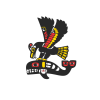
Officials are sounding the alarm over dangerously low water levels and rising temperatures in the Cowichan River.
In a news release Monday, the Cowichan Watershed Board (CWB) warns the system is trending toward the same drought conditions that caused the death of more than 100,000 fish in 2023.
The board says data collected from six monitoring sites along the river show increasingly unstable water chemistry, including “significant daily fluctations in pH and dissolved oxygen levels,” along with the higher temperatures.
“Combined, these factors can be lethal to fish and other aquatic life,” the CWB said in a statement.
Without significant rainfall or a shift in weather patterns, conditions are expected to worsen in the coming weeks. The declining conditions have already prompted fishing in the Cowichan River to be shut down until Aug. 31.
“Our Lulumexun (Lands and Natural Resources) staff have been closely monitoring conditions on the Quw’utsun Sta’lo’ and, over many weeks, have contributed valuable knowledge and advocacy for the recent decision to close the fishery early,” said Cowichan Tribes Chief Cindy Daniels (Sulsulxumaat).
“We take our guardianship responsibilities seriously to protect the river, the fish, and other species that depend on it.”
Among the emergency actions already underway, the Town of Lake Cowichan has reduced its wastewater effluent discharges by half and is releasing effluent overnight to limit algae growth, spring flows from the Cowichan Lake weir are being reduced to conserve lake levels and teams are identifying and protecting pockets of cooler water where fish can survive during heat stress.
Last spring, the B.C. government announced it would invest $14 million to support Cowichan Tribes and the greater community to replace the 74-year-old weir.
Local authorities said the replacement will help store more water, allowing them to maintain higher flows during the summer months. That would provide better conditions for fish, providing them better access to shady riverbank areas, as well as further dilute sewage effluent.
Officials say as the effects of climate change continue to impact the river, droughts like this one will only become more frequent and severe.
“This is an all-hands-on-deck moment for the Quw’utsun Sta’lo’ and other rivers in our region,” said CWB executive director Danielle Paydli. “Every action—no matter how small—helps protect the rivers and life that depend on them.”
The warnings from the CWB come as the B.C. government urged residents and businesses across the province to conserve water, warning that many regions are at risk of worsening drought conditions in the weeks ahead.
“Saving water and responding to drought is a shared responsibility, and we know that early action can make a big difference, especially when we work together,” said Randene Neill, B.C. Minister of Water, Land and Resource Stewardship.
The province says much of southern B.C. has received below-average precipitation this year and forecasts show little relief ahead.
While some areas recently received rain, it hasn’t been enough to reverse the dry trend, especially in high-risk watersheds like the Cowichan River that support fish populations.
Officials say residential water use can make up 70 per cent of total demand in some communities during summer. British Columbians are being encouraged to take small steps to conserve water, like limiting waterings, fixing leaky taps and using a broom instead of a hose to clean patios.
If voluntary efforts fall short, the province warns that temporary water restrictions may be put in place to protect ecosystems and fish populations at risk of long-term harm.
The CWB is urging residents to help by reporting distressed fish to the Department of Fisheries and Ocean’s 24/7 hotline at 1-800-465-4336 or by emailing [email protected].
 Email
Email



